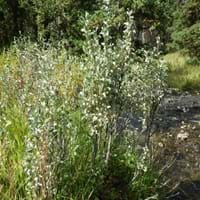Life Span
Biennial
Perennial
Origin
Texas
North America, Alaska, Canada
Types
Not available
Not Available
Habitat
Forests, meadows, Pastures, Prairies, savannahs, Woodland edges
Dappled Shade, Hedge, Sunny Edge, Woodland Garden
USDA Hardiness Zone
8-10
2-6
Sunset Zone
H1, 8, 9, 12, 13, 14, 15, 16, 17, 18, 19, 20, 21, 22, 23, 24
Not Available
Habit
Upright/Erect
Thicket/Colonizing
Flower Color
White, Lemon yellow, Light Pink
Yellow
Flower Color Modifier
Bicolor
Not Available
Fruit Color
Tan
Green, Tan
Leaf Color in Spring
Green
Not Available
Leaf Color in Summer
Green
Not Available
Leaf Color in Fall
Not Available
Not Available
Leaf Color in Winter
Light Green
Not Available
Leaf Shape
Alternate
Lanceolate
Plant Season
Spring, Summer
Spring, Summer, Fall
Sunlight
Full Sun, Partial Sun
Full Sun, Partial Sun
Type of Soil
Loam, Sand
Loam, Sand
The pH of Soil
Neutral, Alkaline
Neutral, Alkaline
Soil Drainage
Well drained
Well drained
Bloom Time
Early Spring, Spring, Late Spring, Early Summer, Late Winter
Not Available
Tolerances
Drought
Not Available
Where to Plant?
Container, Ground, Pot
Ground, Pot
How to Plant?
Seedlings
Hardwood Cuttings, Seedlings
Plant Maintenance
Medium
Medium
Watering Requirements
Average Water Needs, Do Not over Water, Keep the Soil well drained, Requires regular watering
Average Water Needs, Do Not over Water
In Summer
Lots of watering
Lots of watering
In Spring
Moderate
Moderate
In Winter
Average Water
Average Water
Soil pH
Neutral, Alkaline
Neutral, Alkaline
Soil Type
Loam, Sand
Loam, Sand
Soil Drainage Capacity
Well drained
Well drained
Sun Exposure
Full Sun, Partial Sun
Full Sun, Partial Sun
Pruning
Remove damaged leaves, Remove dead branches, Remove dead leaves
Remove damaged leaves, Remove dead branches, Remove dead leaves
Fertilizers
All-Purpose Liquid Fertilizer
Phosphorous, Use nitrogen rich soil
Pests and Diseases
Pests and diseases free, Red blotch
Leaf spot, Rust
Plant Tolerance
Drought
Drought
Flowers
Yes
Insignificant
Flower Petal Number
Single
Not Available
Foliage Texture
Medium
Not Available
Foliage Sheen
Matte
Not Available
Invasive
Sometimes
Sometimes
Attracts
Bugs, Butterflies, Insects
Scale Insects
Allergy
Abdominal pain, Anxiety, Inflammation, Low blood pressure
Not Available
Aesthetic Uses
Beautification, Decorating walls, Hanging Basket, Showy Purposes, Used as an interior landscaping species, Used for decorating walls, fences, gates, hedges, etc.
Bonsai
Beauty Benefits
Skin irritation, Skin Problems
Not Available
Environmental Uses
Air purification
Fixes Nitrogen
Medicinal Uses
Eczema, Menstrual Cramps, Menstrual Disorders
Cancer, Salve, VD
Part of Plant Used
Flowers, Root, Seeds, Stem
Fruits, Seeds
Other Uses
Beneficial species for attracting pollinators, deer resistant, Edible seed
Jelly, Used for making soaps, Used to flavour soups
Used As Indoor Plant
Yes
Yes
Used As Outdoor Plant
Yes
Yes
Garden Design
Mixed Border, Rock Garden, Wall, Wildflower
Hedges, Mixed Border, Screening, Wind Break
Botanical Name
OENOTHERA mexicana
ELAEAGNUS commutata
Common Name
pinkladies, pink evening primrose, showy evening primrose, Mexican primrose, and amapola.
Silverberry, Wolf-Willow
In Hindi
Mexican primrose
Silverberry
In German
Rosa Nachtkerze
Silverberry
In French
Mexican primrose
Silverberry
In Spanish
Primrose mexicana
Silverberry
In Greek
Μεξικού Primrose
Silverberry
In Portuguese
Mexican Primrose
Silverberry
In Polish
Mexican Primrose
Silverberry
In Latin
Mexicanus Primrose
Silverberry
Phylum
Tracheophyta
Magnoliophyta
Class
Magnoliopsida
Magnoliopsida
Family
Onagraceae
Elaeagnaceae
Genus
Oenothera
Elaeagnus
Clade
Angiosperms, Eudicots, Rosids
Angiosperms, Eudicots, Rosids
Tribe
Onagreae
Not Available
Subfamily
Onagroideae
Elaeagnoideae
Properties of Mexican primrose and Silverberry
Wondering what are the properties of Mexican primrose and Silverberry? We provide you with everything About Mexican primrose and Silverberry. Mexican primrose doesn't have thorns and Silverberry doesn't have thorns. Also Mexican primrose does not have fragrant flowers. Mexican primrose has allergic reactions like Abdominal pain, Anxiety, Inflammation and Low blood pressure and Silverberry has allergic reactions like Abdominal pain, Anxiety, Inflammation and Low blood pressure. Compare all the properties and characteristics of these two plants. Find out which of these plant can be used as indoor plant. If you are interested to decorate your house and garden, find out aesthetic uses, compare them and select the plant which will beautify your surrounding. Along with beautification, try comparing medicinal and edible uses of Mexican primrose and Silverberry and you can choose the plant having best and most benefits.
Season and Care of Mexican primrose and Silverberry
Season and care of Mexican primrose and Silverberry is important to know. While considering everything about Mexican primrose and Silverberry Care, growing season is an essential factor. Mexican primrose season is Spring and Summer and Silverberry season is Spring and Summer. The type of soil for Mexican primrose is Loam, Sand and for Silverberry is Loam, Sand while the PH of soil for Mexican primrose is Neutral, Alkaline and for Silverberry is Neutral, Alkaline.
Mexican primrose and Silverberry Physical Information
Mexican primrose and Silverberry physical information is very important for comparison. Mexican primrose height is 15.20 cm and width 25.40 cm whereas Silverberry height is 90.00 cm and width 120.00 cm. The color specification of Mexican primrose and Silverberry are as follows:
Mexican primrose flower color: White, Lemon yellow and Light Pink
Mexican primrose leaf color: Green
Silverberry flower color: Yellow
- Silverberry leaf color: Not Available
Care of Mexican primrose and Silverberry
Care of Mexican primrose and Silverberry include pruning, fertilizers, watering etc. Mexican primrose pruning is done Remove damaged leaves, Remove dead branches and Remove dead leaves and Silverberry pruning is done Remove damaged leaves, Remove dead branches and Remove dead leaves. In summer Mexican primrose needs Lots of watering and in winter, it needs Average Water. Whereas, in summer Silverberry needs Lots of watering and in winter, it needs Average Water.





